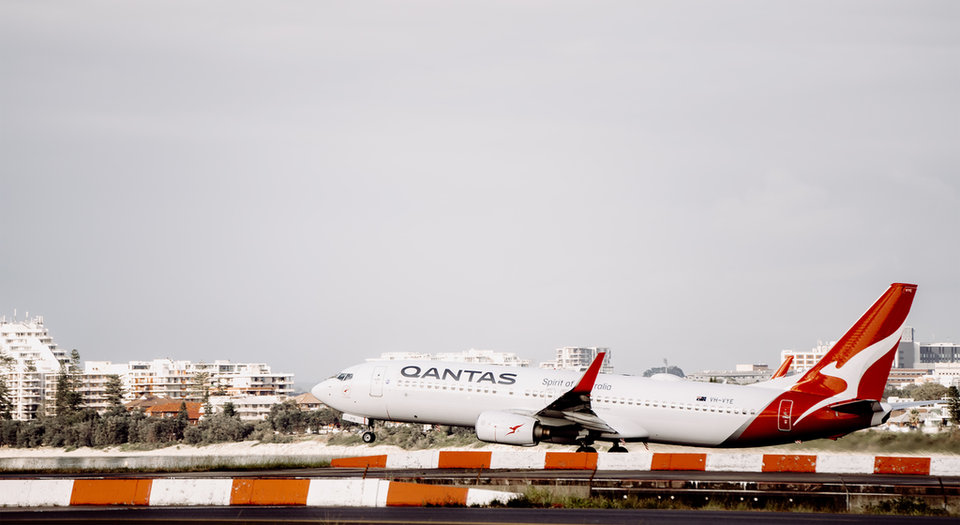
FLY-IN FLY-OUT
Is there a future for Australia’s fly-in fly-out mining workers?
Pandemic-related border restrictions and quarantine requirements have been especially punishing for Western Australia’s fly-in fly-out mining workers. As the state’s premier calls on companies to hire more locally, Heidi Vella investigates the future for fly-in fly-out workers and whether a skills crisis is imminent.
W
estern Australia’s fly-in fly-out (FIFO) workers have been integral to maintaining mining production in the state during the peak of the pandemic. However, nearly a year on, stories are emerging of the personal sacrifices some miners have had to endure due to strict restrictions at the border.
Changes to rosters and quarantine requirements, aimed at reducing virus transmission, have, in many cases, meant FIFO workers were away from their families for up to six months at a time. The Australian Workers Union national secretary, Daniel Walton, has called the situation “heartbreaking”. Even when border restrictions were lifted after several months, it wasn’t long until they were temporarily imposed again due to a solitary coronavirus case in the state.
The FIFO way of working has always been considered tough - studies have highlighted higher rates of mental health illness among the workforce - but the extra pressures of the pandemic are prompting a rethink of the arrangement.
Personal impacts
Chris Kent, state regional director at Hays Recruiting, says that the pandemic has challenged what has typically been a ‘very normal situation’ in the Australian workforce.
“Western Australia has always relied on a FIFO workforce, both from Australia and abroad, and what the pandemic did, by seeing the border close, was put a handbrake on this way of life for the last 5-6 months,” he says.
Miners in the state were classified as providing essential services and allowed to operate; however, changes to rosters and quarantine requirements put huge pressure on existing workers, especially those with families living in other states. Some FIFO miners have detailed spending their entire rest and recovery time isolated at home with no visits from friends or family, feeling they had to choose between their job and family life.
A 2018 study by Dr Jess Gilbert and Professor Sharon Parker from the Centre for Transformative Work Design at Curtin University, and Dr Laura Fruhen from the University of Western Australia, identified that 33% of FIFO workers had high or very high psychological distress, which Gilbert says is ‘an already very high number’. In a recent study in the context of Covid-19, that number rose to 41%.
Around 50% of our participants reported being more lonely than usual.
“Around 50% of our participants reported being more lonely than usual and around 30% encountered difficulties at some point in navigating border closures and not being able to travel home to see their family,” explains Dr Gilbert.
The mental health of FIFO workers has always been a contentious issue. For some, Kent says, it is a normal way of life passed down from many generations, whereas others find it hard to adapt.
“Some people get frustrated when others from outside the industry, who've never worked in it, comment on the mental health challenges of FIFO workers. But also, what’s probably a noisier minority, do speak-up about the issue. However, there’s no doubt, living in a remote area, doing hot dusty work, is challenging,” he says.
Beyond mental health, the uncertain nature of the pandemic has thrown up logistical challenges. Kent shares one story of a Queensland worker testing positive, which meant all workers on the same plane had to immediately quarantine and a completely different crew be flown in.
“Often these will be casual workers and therefore won’t get paid for their time,” he says. “This is obviously a big deterrent for workers.”
Booming sector
Despite the challenges, the Western Australian mining sector itself is booming. High demand for iron ore and gold, the main commodities produced in the state, has created pressure to increase production levels.
Jobs data provided by Seek recruitment agency shows that in January 2021, there were 16% more mining jobs advertised in Western Australia than in the same month last year. By comparison, the national figure remained the same. Of the 5,000 jobs advertised in mining on Seek, nearly 3,000 are in Western Australia.
In response to the challenges, some major employers have offered incentives to try to attract workers and their families to relocate to the state. While Kent says take-up was ‘pretty good’ initially, it still makes-up only a small percentage of workers. Often those with kids at school and partners in work in different states will be reluctant to move.
What happens when the market turns and they get made redundant and they can't sell the house?
However, Kent says that some mines emerging in the southwest of the state are attracting miners to stay because the region is close to popular lifestyle parts of Western Australia. The goldfields in Calgary have managed to encourage all their workforce to live in the town or region. However, there are still, at any given time, 1,000 or so vacancies in the gold fields, says Kent.
However, Rob Tyson, Mining International director and host of the Dig Deep podcast, says that setting up mining-based communities can also be problematic.
“People buying houses in these mining towns, when the industry is booming, is fine, but what happens when the market turns and they get made redundant and they can't sell the house because there's a downturn and no one wants to live there?" asks Tyson.

Skills shortages
Western Australia Premier Mark McGowan has called on the resources sector to try and hire locally. But this will not be easy given that the mining sector nationally, pre-pandemic, already faced a legacy skills shortage from the 2012 mining crash.
The deficit has been made more acute now by the limited access to international workers and the intermittent hard borders, but also the very poor pipeline of talent coming from universities.
Enrolments in mining engineering courses and geology are at record lows. Furthermore, the cyclical nature of the industry often means permanent, secure jobs are not the norm.
Miners can start to dictate what money they want, but it’s unsustainable for companies.
This chronic skills shortage means mining is now becoming a candidate’s market.
“Miners can start to dictate what money they want, but it’s unsustainable for companies to keep paying more and more. Projects then become less profitable and we have another commodity crash and return to no one having a job,” says Kent.
The Association of Mining and Exploration Company chief executive, Warren Pearce, has even said that the situation could put off investors in the longer term.
// Main image: 3D System Model and Completed Installation. Credit: Deimos
Future of FIFO
Could the legacy of the pandemic be turning candidates away from FIFO working altogether and finding other career paths?
“I think many people around the world are reflecting on their current work and life situations and potentially may make different decisions going forward,” says Dr Gilbert.
“The potential for border and travel restrictions for Western Australian FIFO workers is one such factor that workers may take into account when deciding on their work engagements.”
Tyson agrees: “Workers might think ‘I've had enough of that for a moment because if I fly-in, I may not know when I am coming back’ because of the border restrictions.”
Dr David Bissel, associate professor and Australian Research Council future fellow in the School of Geography at the University of Melbourne, says: “It might be that people will look closer to home for their employment options.
"But on the other hand, given the economic challenges we’re currently facing, local options may be few and far between, meaning that people have to turn to FIFO work.”
Local options may be few and far between, meaning that people have to turn to FIFO work.
Bissel and his co-researchers, who previously produced a report on FIFO workers, have created an animation to help FIFO worker families cope with some of the most commonly experienced issues.
It’s clear that, as in many other contexts, the pandemic has greatly accelerated and exacerbated what was already a challenging situation. How far reaching the impact will be remains to be seen.
Kent thinks that governments and major mining companies will have to think about whether or not the FIFO model is a realistic business plan moving forward. Most importantly though, there needs to be a focus on bringing new talent through the pipeline and adapting work to attract them.
“Having good work design is important and is something young people will consider when thinking about their career paths,” he says. “The role itself, the organisational culture, the opportunity for work-life balance is important to consider when attracting new talent.
"The resources sector is a core component of Australia’s economy, and to keep operations going new and skilled workers are needed.”
// Main image: 3D System Model and Completed Installation. Credit: Deimos